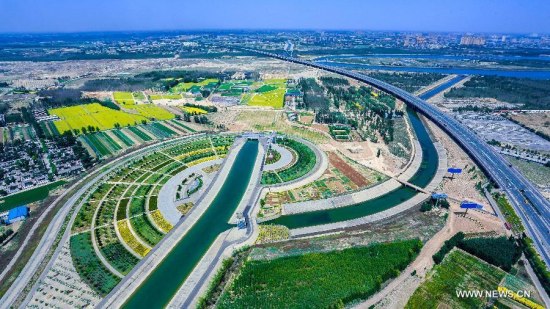
File photo taken on May 18, 2015 shows one part of the South-to-North Water Diversion Middle Route Project in Zhengding County, north China's Hebei Province. (Photo/Xinhua)
The amount of water diverted through the middle route of China's massive south-to-north water diversion project has passed one billion cubic meters, according to official data.
The water quality is stable, said sources with the Construction and Administration Bureau of the South-to-North Water Diversion Middle Route Project on Wednesday.
The water diversion project, the world's largest at an estimated cost of 500 billion yuan (about 82 billion U.S. dollars), is designed to take water from China's longest river, the Yangtze, through eastern, middle and western routes to feed dry areas in the north.
It was officially approved by the State Council, China's cabinet, in 2002, 50 years after late Chinese leader Mao Zedong came up with the idea.
The middle route, the most attention-grabbing of the three due to its role in feeding water to the national capital, started supplying water on Dec. 12, 2014 as part of the project's first phase.
The route begins at Danjiangkou reservoir in central China's Hubei Province and runs 1,432 km. It can supply 9.5 billion cubic meters of water per year on average for some 100 million people in the dry northern regions, including Beijing and Tianjin cities, as well as Henan and Hebei provinces.
As of Monday, Beijing has received 300 million cubic meters of Yangtze water through the middle route since December, with daily supply reaching 3.3 million cubic meters.
















































